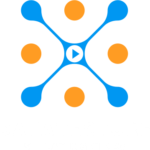Data Collection For Observability
Observability, identifying insights in multi-related datasets, has become a staple for streaming providers. It can provide both a deeper understanding of technical issues, such as root-cause analysis, and business-related opportunities like identifying the best subscriber groups to up-sell a higher tier membership.
- Home
- Case Studies
- Data Collection for Observability
01
Promoting Better Observability Using Datazoom Is Easy
How Datazoom Can Improve Observability
Datazoom has two built-in features which can improve your observability. Whether your operations engineers are looking for root-cause or your business executives are looking for revenue opportunities, these two features can provide you a dataset from which you can derive true insights.
02
Two Features To Improve Observability
Enrichment and Standardization
Observability depends upon having the right data. This often means combining or relating different sources to produce a single source against which visualization can be run. But that is time-intensive and fraught with potential errors. Datazoom’s Enrichment and Standardization features ensure you have that single data source without doing any post-processing.
The key to enriching your data is a JSON-injection process. You specify the datapoints (and sources) you want to add to a collected event. When the event is fired by the end-point and delivered to the Collector, the Datazoom platform pulls the additional data from the specified sources and injects it into the JSON stream from the Collector. What’s delivered to the Connector is a single stream of the combined data.
When multiple data sources are part of a larger set, data consistency is critical. For example, if each data source in the set specifies a certain variable with a different name, it can be very difficult to create the relationships necessary for identifying bigger issues. But, Datazoom automatically standardizes datapoints by mapping them to the CDN Data and Video Player Data Dictionaries.
03
Well Accepted And Documented Methods
Using Proven Technology
JSON stands for JavaScript Object Notation. It is a lightweight format for storing and transporting data and is often used when data is sent from a server to a web page. JSON is “self-describing” and easy to understand. JSON adheres to the following rules:
- Data is in name/value pair
- Data is separated by commas
- Curly braces hold objects
- Square brackets hold arrays

